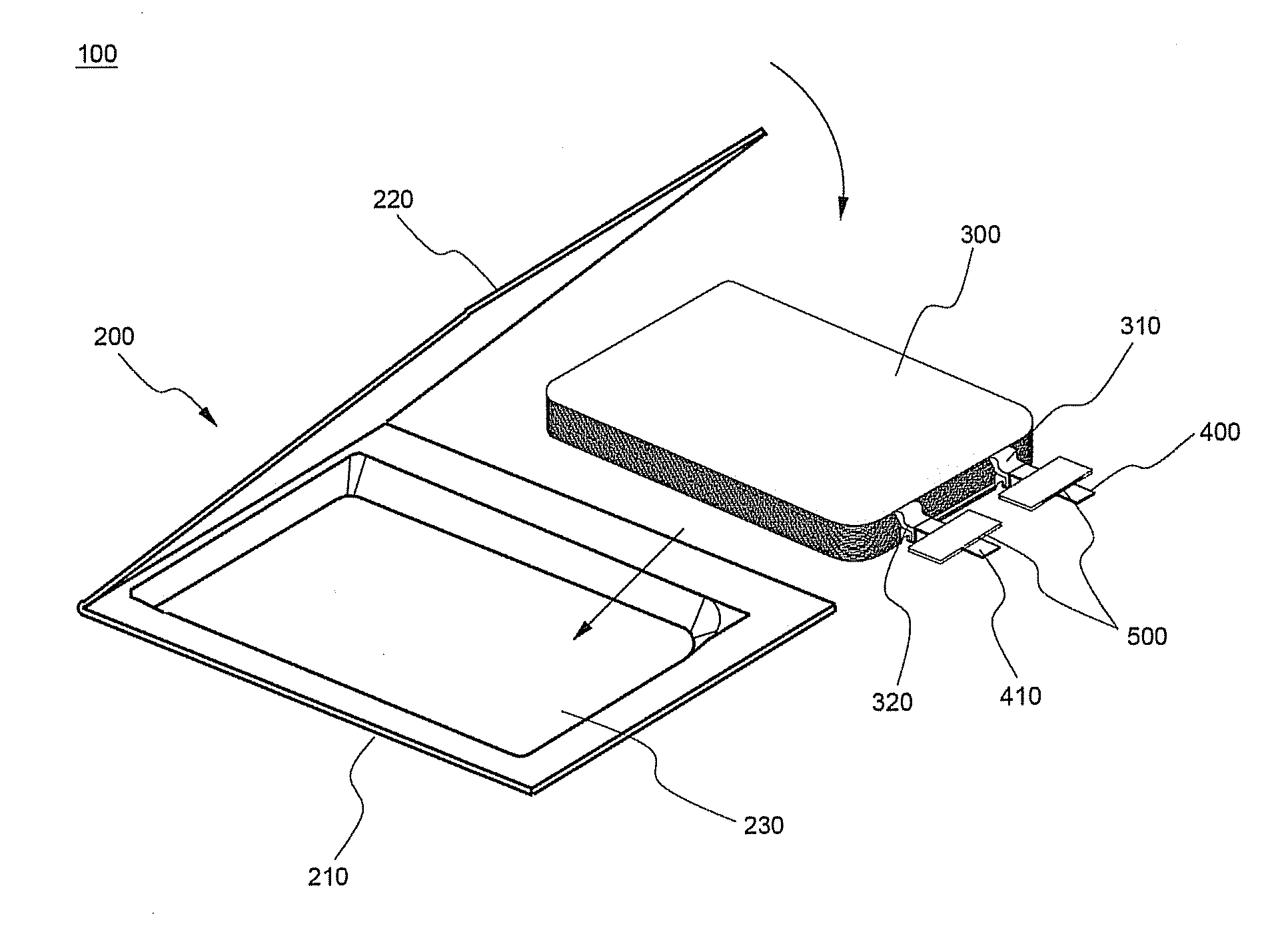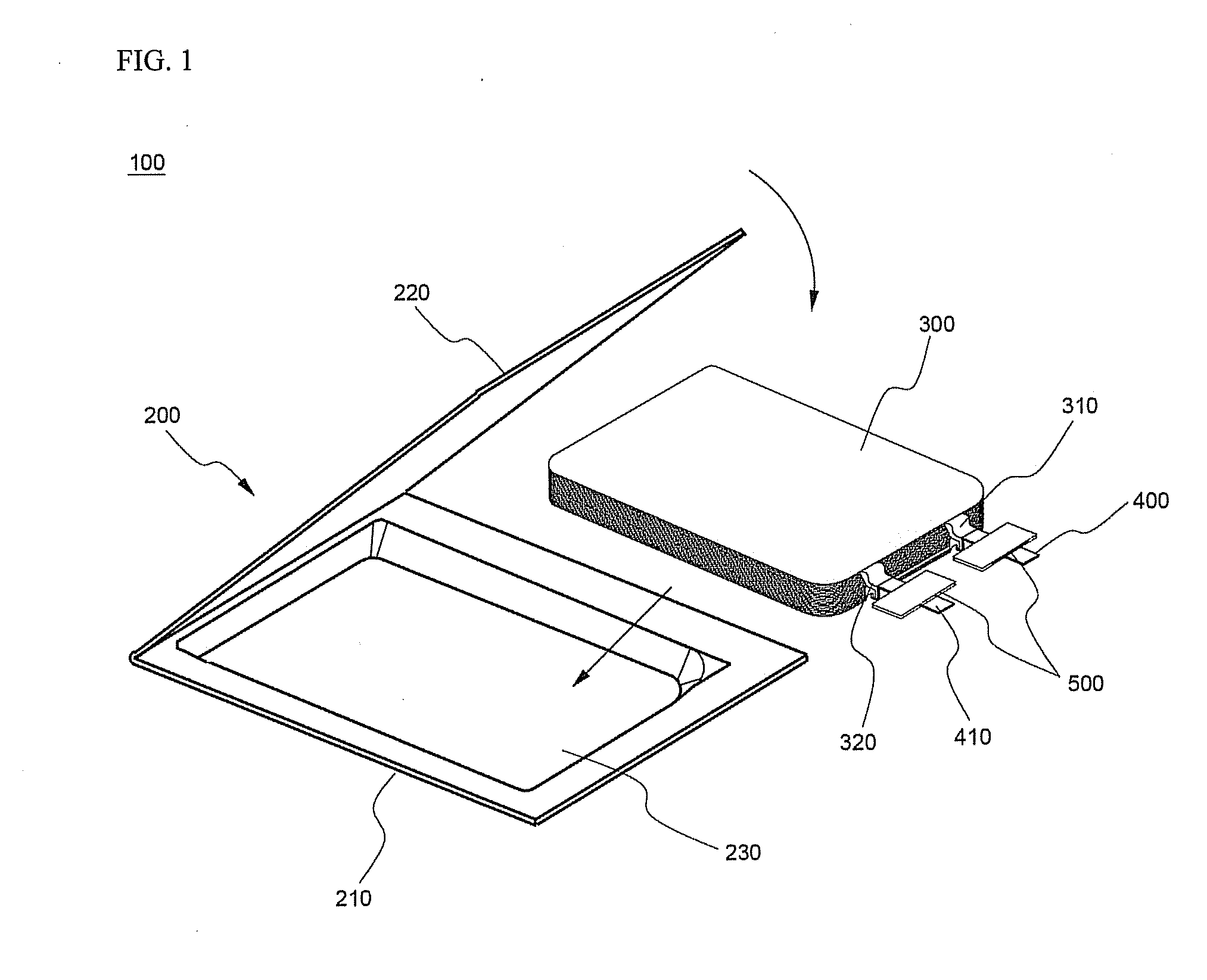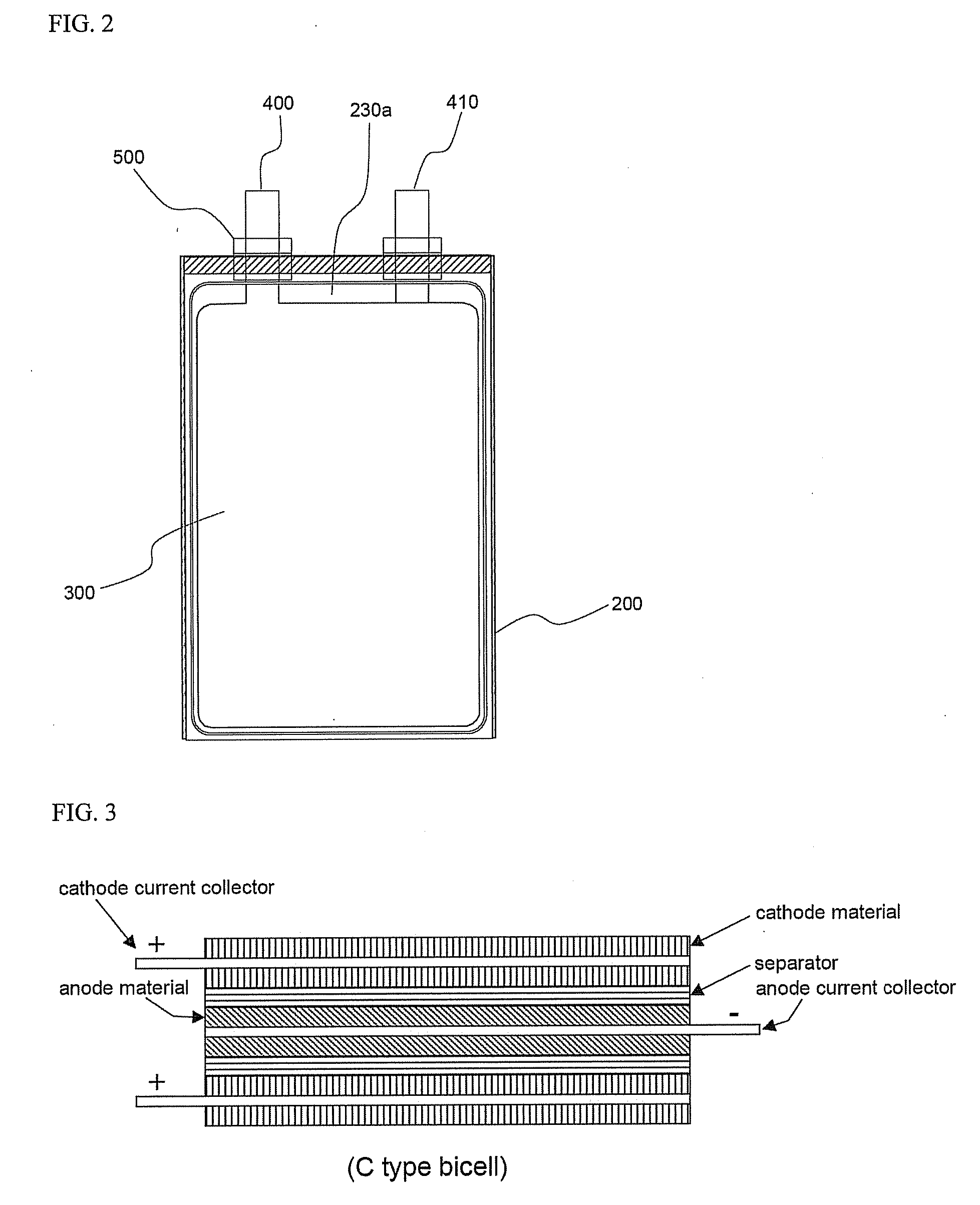Electrode assembly prepared in longitudinal folding manner and electrochemical cell employing the same
a technology of longitudinal folding and electrode assembly, which is applied in the direction of wound/folded electrode electrodes, flat cell grouping, sustainable manufacturing/processing, etc., can solve the problems of low utilizability, complex and troublesome electrode assembly, and inconvenient electrode assembly, etc., and achieve the effect of improving the safety of the electrode assembly
- Summary
- Abstract
- Description
- Claims
- Application Information
AI Technical Summary
Benefits of technology
Problems solved by technology
Method used
Image
Examples
Embodiment Construction
[0057] Now, preferred embodiments of the present invention will be described in detail with reference to the accompanying drawings. It should be noted, however, that the scope of the present invention is not limited by the illustrated embodiments.
[0058]FIGS. 5 and 6 are typical views respectively illustrating a process for manufacturing an electrode assembly using the bicells according to a preferred embodiment of the present invention.
[0059] Referring to these drawings, a separation film 100 is a film formed in the shape of a long sheet. The separation film 100 is constructed in the same porous structure as the separators of the unit cells. The separation film 100 has a width slightly greater than that of the unit cells.
[0060] C-type bicells 201 and 202 and A-type bicells 300 and 301 are arranged in the longitudinal direction of the separation film 100 such that electrode taps 211 and 212 of the C-type bicells 201 and 202 face each other and electrode taps 310 and 311 of the A-t...
PUM
| Property | Measurement | Unit |
|---|---|---|
| thickness | aaaaa | aaaaa |
| pore diameter | aaaaa | aaaaa |
| size | aaaaa | aaaaa |
Abstract
Description
Claims
Application Information
 Login to View More
Login to View More - R&D
- Intellectual Property
- Life Sciences
- Materials
- Tech Scout
- Unparalleled Data Quality
- Higher Quality Content
- 60% Fewer Hallucinations
Browse by: Latest US Patents, China's latest patents, Technical Efficacy Thesaurus, Application Domain, Technology Topic, Popular Technical Reports.
© 2025 PatSnap. All rights reserved.Legal|Privacy policy|Modern Slavery Act Transparency Statement|Sitemap|About US| Contact US: help@patsnap.com



